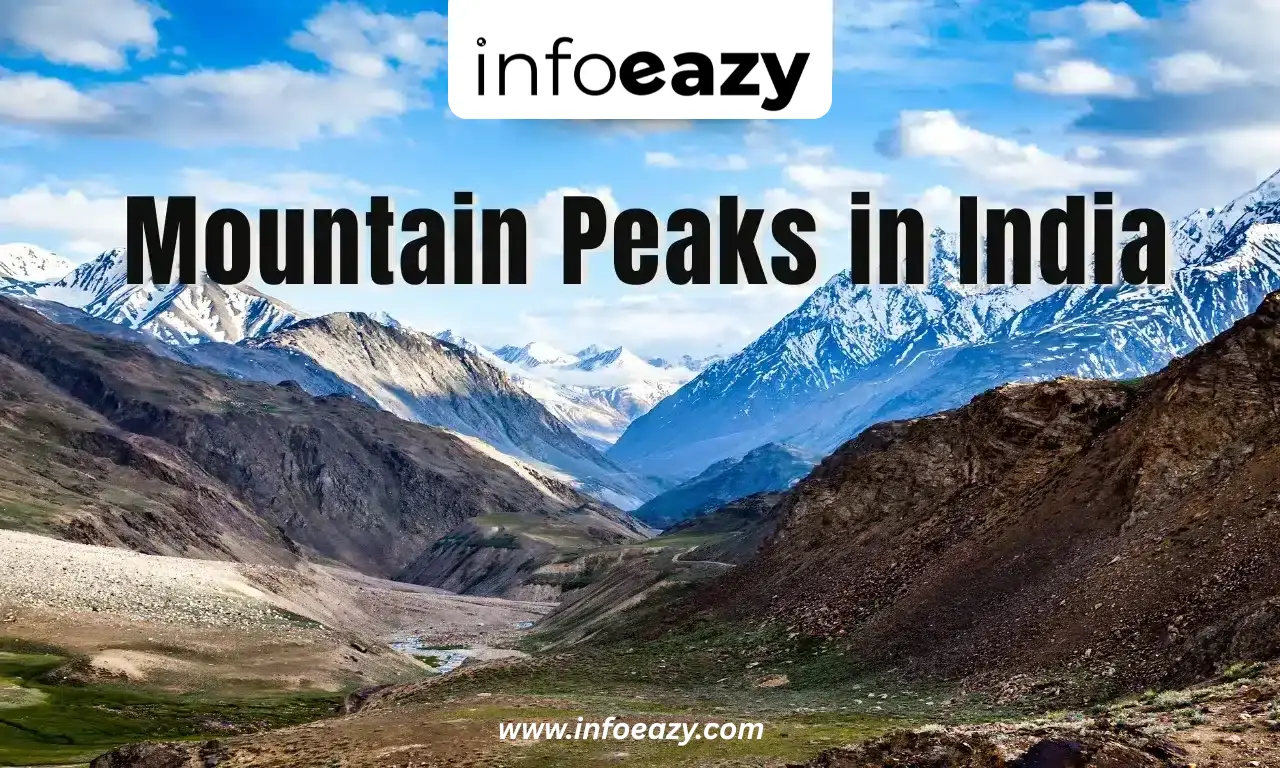India is a land of diverse landscapes, and its mountains form a vital part of its geography, culture, and environment. From the mighty Himalayas in the north to the Nilgiris in the south, mountains in India are not only beautiful but also crucial for rivers, climate, and biodiversity. These ranges are home to some of the world’s highest peaks, including Kangchenjunga, Nanda Devi, and Kamet.
List of Mountains in India
There are several mountain ranges in India spread across different regions. The northern part is dominated by the Himalayas, while the central and southern parts have the Vindhya, Satpura, Aravalli, Western Ghats, and Eastern Ghats. These ranges vary in height, features, and importance.
- Himalayas – Highest mountain range in the world.
- Aravalli Range – One of the oldest mountain ranges.
- Western Ghats & Eastern Ghats – Biodiversity hotspots.
- Vindhya & Satpura Ranges – Geologically important in central India.
- Nilgiri Hills – Famous for tea plantations and natural beauty.
List of the Highest Mountain Ranges in India
India’s mountain ranges stretch across the north, central, and southern regions, each with unique geography and significance. The Himalayas, Karakoram, Aravalli, Western Ghats, and others form the backbone of India’s natural landscape. Here is the List of the Highest Mountain Ranges in India.
| List of the Highest Mountain Ranges in India | |||
| Mountain Range | Location (States/Region) | Highest Peak in India | Description |
| Himalayas | Jammu & Kashmir, Himachal, Uttarakhand, Sikkim, Arunachal Pradesh | Kangchenjunga (8,586 m) | Youngest and highest mountain range in the world; source of rivers like Ganga and Yamuna; home to glaciers and snow peaks. |
| Karakoram Range | Ladakh, Jammu & Kashmir | K2/Godwin Austen (8,611 m, in PoK) | Known for rugged terrain and glaciers including Siachen; houses some of the world’s tallest peaks after the Himalayas. |
| Pir Panjal Range | Jammu & Kashmir, Himachal Pradesh | Deo Tibba (6,001 m) | Extension of the Himalayas, covered with snow in winter; popular for trekking, skiing, and natural beauty. |
| Aravalli Range | Rajasthan, Haryana, Delhi | Guru Shikhar (1,722 m) | One of the oldest fold mountains in the world, rich in minerals, semi-arid region with historical forts. |
| Western Ghats | Maharashtra, Karnataka, Kerala, Tamil Nadu | Anamudi (2,695 m) | UNESCO World Heritage Site, rich in biodiversity, famous for forests, waterfalls, and spice plantations. |
| Eastern Ghats | Odisha, Andhra Pradesh, Tamil Nadu | Jindhagada Peak (1,690 m) | Discontinuous hills with dense forests, rivers like Godavari and Mahanadi cut across them. |
| Vindhya Range | Madhya Pradesh, Uttar Pradesh | Sad-Bhawna Shikhar (~752 m) | Important in dividing North and South India; mostly hills and plateaus with historic caves and temples. |
| Satpura Range | Madhya Pradesh, Maharashtra, Chhattisgarh | Dhupgarh (1,350 m) | Rich in wildlife with famous national parks like Satpura and Pachmarhi hill station. |
| Nilgiri Hills | Tamil Nadu, Karnataka, Kerala | Doddabetta (2,637 m) | Famous for tea estates, wildlife sanctuaries, and hill stations like Ooty and Coonoor. |
List of the Highest Mountain Peaks in India
India is home to some of the world’s tallest and most majestic peaks, mainly in the Himalayas and Karakoram ranges. These peaks, like Kangchenjunga, Nanda Devi, and Kamet, not only showcase natural beauty but also hold cultural and strategic importance.
| List of the Highest Mountain Peaks in India | ||||
| Peak Name | Height (m) | Location (State) | Mountain Range | Description |
| Kangchenjunga | 8,586 m | Sikkim | Himalayas | Highest peak in India and third highest in the world; considered sacred in Sikkimese culture. |
| Nanda Devi | 7,816 m | Uttarakhand | Garhwal Himalayas | Second highest peak in India, located in the Nanda Devi Biosphere Reserve, a UNESCO site. |
| Kamet | 7,756 m | Uttarakhand | Garhwal Himalayas | Known for its proximity to Tibet and its pyramid-shaped peak covered with glaciers. |
| Saltoro Kangri | 7,742 m | Ladakh (Karakoram) | Karakoram Range | Located near the Siachen Glacier; part of disputed territories, known for its challenging climbs. |
| Saser Kangri | 7,672 m | Ladakh | Karakoram Range | Series of peaks forming part of the eastern Karakoram; remote and less explored. |
| Mamostong Kangri | 7,516 m | Ladakh | Karakoram Range | One of the highest peaks in Ladakh, surrounded by glaciers and tough terrain. |
| Rimo Peak | 7,385 m | Ladakh | Karakoram Range | Lies near the Siachen Glacier; less accessible but important strategically. |
| Hardeol | 7,151 m | Uttarakhand | Kumaon Himalayas | Also called the ‘Temple of the Gods’, forms a part of the northeastern wall of the Nanda Devi Sanctuary. |
| Chaukhamba | 7,138 m | Uttarakhand | Garhwal Himalayas | A group of four peaks; prominent in the Badrinath region, revered in local traditions. |
| Trisul | 7,120 m | Uttarakhand | Kumaon Himalayas | Named after Lord Shiva’s Trident (Trishul); consists of three peaks forming a trident shape. |
Mountains in India: Features
Mountains in India are diverse in age, structure, and ecology, ranging from the young Himalayas to the ancient Aravallis. They influence climate, give rise to rivers, and shelter rich biodiversity.
- Variety of Ranges – Includes Himalayas, Western Ghats, Eastern Ghats, Aravallis, Vindhyas, and Nilgiris.
- Source of Rivers – Ganga, Yamuna, Brahmaputra, Godavari, and Krishna originate from mountains.
- Biodiversity Hotspots – Himalayas and Western Ghats are rich in unique flora and fauna.
- Climate Influence – Act as barriers for monsoon winds and regulate rainfall.
- Cultural Significance – Home to sacred sites like Kedarnath, Amarnath, and Vaishno Devi.
Importance of Mountains in India
Mountains in India are crucial for water, climate balance, biodiversity, and cultural heritage. They support life, provide resources, and attract tourism across the country.
- Origin of major rivers like Ganga, Yamuna, and Brahmaputra
- Regulate climate and control monsoon rainfall
- Shelter rare plants, animals, and medicinal herbs
- Attract tourists and pilgrims to sacred and scenic sites
- Provide minerals, forests, and fertile soil for agriculture
Mountains in India FAQs
Q1. Which is the highest mountain peak in India?+
Q2. Which is the oldest mountain range in India?+
Q3. Which mountain range divides North and South India?+
Q4. Which is the highest peak in South India?+
Q5. Which are the UNESCO World Heritage mountain ranges in India?+
Tags: Mountains in India




